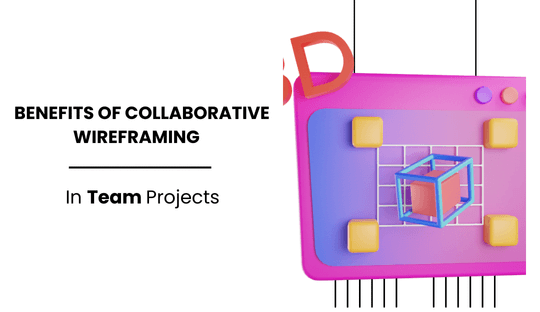
The Benefits of Collaborative Wireframing in Team Projects
In today’s fast-paced digital world, effective collaboration is crucial for the success of any project. At Flykez CO, a leading creative brand company in Lithuania, we specialize in website design & development, search engine optimization, brand design & brand identity, digital marketing, and UI & UX design. One of the most impactful collaborative techniques we utilize is wireframing. This blog post explores the numerous benefits of collaborative wireframing in team projects and how it can significantly enhance the design and development process.
Understanding Collaborative Wireframing
Wireframing is the process of creating a skeletal outline of a website or application. It helps visualize the structure, layout, and functionality of the product before moving on to more detailed design stages. Collaborative wireframing involves multiple team members working together to create and refine these wireframes, leveraging diverse perspectives and expertise to produce a more robust design.
Key Benefits of Collaborative Wireframing
- Enhanced Creativity and Innovation
Collaborative wireframing brings together different team members with unique skills and viewpoints. This diversity fosters creativity and innovation, as team members can brainstorm ideas and solutions collectively. By pooling their knowledge, teams can explore a wider range of design possibilities and come up with more innovative solutions.
- Improved Communication and Understanding
When team members collaborate on wireframes, they gain a better understanding of the project’s goals and requirements. This shared understanding helps ensure that everyone is on the same page, reducing the likelihood of miscommunication and misunderstandings. Collaborative wireframing tools such as Figma, Adobe XD, and InVision allow team members to comment on and discuss specific elements in real-time, further enhancing communication.
- Faster Decision Making
Collaborative wireframing accelerates the decision-making process by enabling quick feedback and iteration. Team members can review and discuss wireframes in real-time, making necessary adjustments on the spot. This immediate feedback loop helps resolve issues faster and keeps the project moving forward efficiently.
- Higher Quality Outputs
By involving multiple team members in the wireframing process, the quality of the output is significantly improved. Different perspectives can help identify potential issues early on, leading to more refined and user-centric designs. Additionally, collaborative wireframing ensures that all aspects of the design, from user experience (UX) to technical feasibility, are considered and addressed.
- Greater Stakeholder Buy-In
Collaborative wireframing helps build consensus among stakeholders by involving them in the design process from the beginning. When stakeholders can see and contribute to the wireframes, they are more likely to feel invested in the project and supportive of the final design. This buy-in is crucial for ensuring the project’s success and smooth implementation.
Best Practices for Collaborative Wireframing
Use the Right Tools
Choosing the right wireframing tools is essential for effective collaboration. Tools like Figma, Adobe XD, and InVision offer robust features for real-time collaboration, commenting, and version control, making it easy for teams to work together seamlessly. Also Read About The Impact of Wireframing on User Journey Mapping
- Establish Clear Roles and Responsibilities
Define clear roles and responsibilities for each team member involved in the wireframing process. This clarity helps ensure that everyone knows their tasks and can focus on their specific contributions, leading to a more organized and efficient workflow.
- Encourage Open Communication
Promote an open and inclusive communication environment where all team members feel comfortable sharing their ideas and feedback. Regular check-ins and meetings can help maintain open lines of communication and keep the team aligned on the project’s progress.
- Iterate and Test Frequently
Regularly iterate on the wireframes based on feedback from team members and stakeholders. Conduct usability testing with real users to gather valuable insights and refine the wireframes further. This iterative approach helps ensure that the final design is user-friendly and meets the project’s goals.
- Document Changes and Decisions
Keep a record of all changes and decisions made during the wireframing process. This documentation provides a clear history of the project’s evolution and helps ensure that everyone understands the rationale behind design choices.
Conclusion
Collaborative wireframing is a powerful technique that can significantly enhance the design and development process. By leveraging the diverse perspectives and expertise of the team, collaborative wireframing fosters creativity, improves communication, accelerates decision-making, and leads to higher quality outputs. At Flykez CO, we embrace collaborative wireframing to deliver exceptional digital products that meet our clients’ needs and exceed their expectations.
For more information about our services and how we can help you with your design projects, visit our website at www.flykez.com. Let Flykez CO be your partner in creating innovative and user-centric digital experiences.
